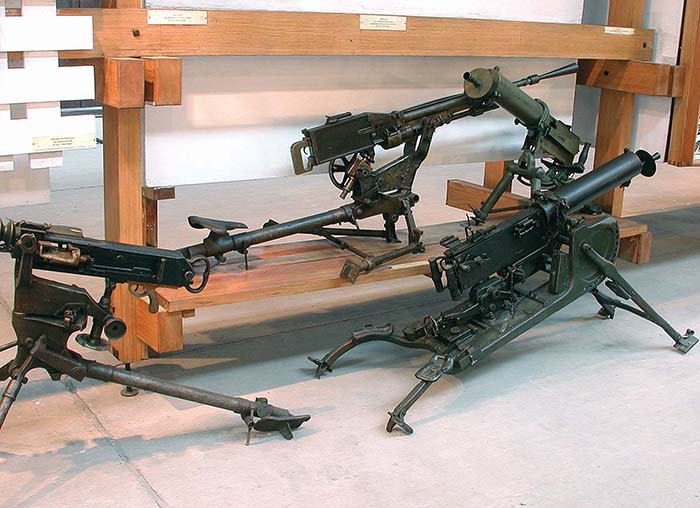By Dan Shea
Above: The Monument to the Unknown Hero on Mount Avala outside of Belgrade, Yugoslavia. The monument sits on top of the highest mountain in the area, and there is a 360 degree panoramic view of the Serbian countryside. At the end of World War One, the new King of the Kingdom of Serbs, Croats, and Slovenes built this monument to all soldiers of all sides who were lost in that epic war. There are several sections visible that took direct hits from the German cannoneers doing target practice from the valley during World War Two. Legend has it that their officer was educated about such things, and knew this monument was to all lost soldiers, so he stopped the gunners before they could do more damage.
During the Living History class in Serbia, we spent some time in the Fortress of Kalamegdan Museum. Aside from the live fire of machine guns and cannons, this was a highlight of the tour. More information on Living History can be found at www.livinghistoryserbia.com . This brought up some of the other very interesting displays in the main areas, and the back rooms of some Serbian museums. We decided to bring you some of the special items we found. – Dan
The Old Gun Foundry at Zastava
During the 150th Anniversary of the factory at Zastava, SAR Expeditionary Force members Dr. Philip Dater and Dan Shea were invited guests, along with the main guest, General Mikhail Kalashnikov. The General has a long-standing relationship with many of the designers and engineers at Zastava, where many of his designs have been manufactured. We were fortunate to have a number of conversations with the General, and to tour the Zastava Historical Museum with him. The museum curator at “The Old Gunfoundry” is Mrs. Radmilla Milivodevic. She gave several tours while we were there, and we were impressed with the displays and her knowledge of the history represented there. As an American, I found it interesting to see the displays that represented late 19th Century and early 20th Century technical manufacturing information exchanges between the Yugoslavs and the United States.

The museum itself is located in the old gun foundry building, where cannon were made in the early days. The building itself is a testament to that new industrial architecture at the turn of the last century. Our interests were in two main places. First, the main museum display floor, and second, there were back rooms and upstairs rooms that held the specimens not ready for display. Any visit to Zastava should include a tour of the museum, if it can be arranged.




The Fortress of Kalamegdan
Long time SAR readers will be familiar with the Fortress of Kalamegdan from previous articles, but for this tour we had some special items brought from the back room. Kalamegdan dates back to the Roman times, and has seen many wars, and many masters. The museum there is one of the finest in the “Old World” and the displays cover the Bronze Age through the fighting in Kosovo.
Branka Milosavljevic, Senior Curator at the museum at Kalamegdan, was our tour guide. Her specialties are in the earlier eras, but she was well versed in the modern weapon displays and, with firearms author Branko Bogdanovic and Living History leader Mike Hajducovic, we had a wealth of information presented to us. Around every corner were new, interesting displays, and the Serbian penchant for powerful sculptures were evident throughout. Two items of note other than Tito’s statue, were the “Call to Uprising” by Vojin Bakic from 1953, which is a powerful sculpture of a man calling for the fight against the Nazis, and Nandor Glid’s “Capitulation of Italy” from 1960. In the latter sculpture, Glid uses parts of Italian machine guns, rifles, bayonets, mortars and the other accouterments of war to create a wall sculpture that is intriguing and speaks of the end of the war.

We were allowed to work through the displays of the museum at our own pace, and many items of interest were noted. I found that Tito’s Savage 1928A1 Thompson serial number S-195622 was of as much interest as the Colt Thompson that was displayed with no access to the serial number. We plan to get that information and send it to Thompson Historian Gordon Herigstad for inclusion in his new updates.












Military Museum at Kacharevo
Approximately 40 kilometers North-East of Belgrade is the Military Museum at Kacharevo. This facility is closed to the public, only opened with special permission from Army Headquarters. Colonel Makitan was in charge but he recently retired. A life-long martial arts devotee and sensei of the local dojo, Colonel Makitan had a love of weapons that showed in the displays he and his staff put together. We had a brief amount of time to visit, and found some interesting items. There was a Powder Springs marked M11A1 .380 caliber submachine gun in a glass case, with a leather magazine pouch holding six original magazines. This was credited with being from the special police units in Belgrade. Each room of the old military building had a different theme, and the long main room had rifles through mortars and larger.


| This article first appeared in Small Arms Review V9N2 (November 2005) |











